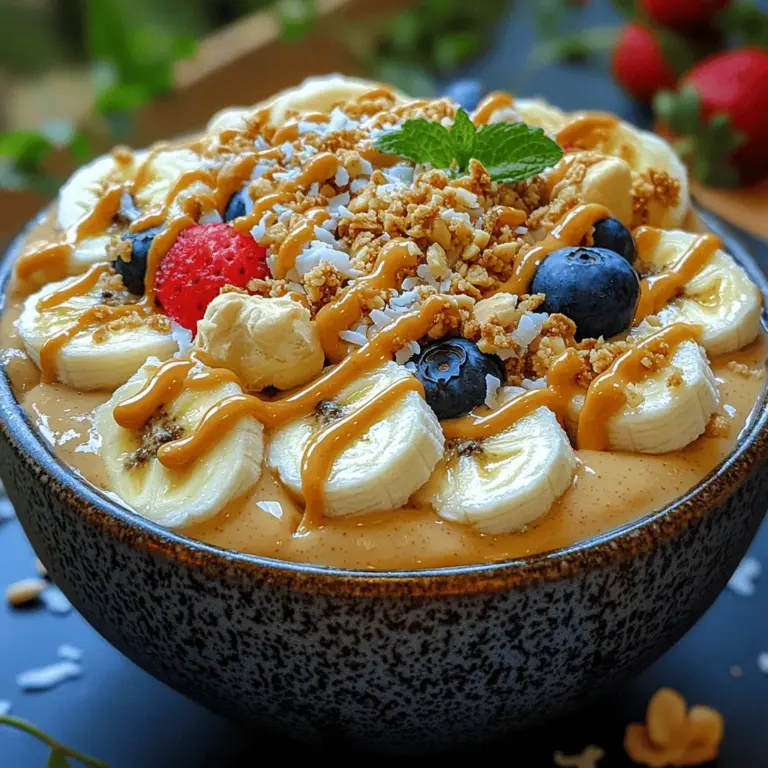Introduction
Lasagna is more than just a dish; it’s a culinary tradition that embodies the heart and soul of Italian cuisine. With its origins tracing back to Ancient Greece, where layers of pasta were made with wheat and flour, lasagna has evolved into a beloved staple in households around the world. The traditional Italian lasagna, known as “Lasagna alla Bolognese,” features rich layers of pasta, savory meat sauce, creamy béchamel, and a medley of cheeses. However, variations abound, reflecting regional preferences and personal touches, from vegetarian versions bursting with seasonal vegetables to creative takes utilizing different sauces.
Homemade lasagna holds a special place in many family gatherings and festive occasions. The process of layering ingredients and allowing flavors to meld in the oven creates a dish that is both comforting and indulgent. Whether it’s a Sunday family dinner or a celebratory feast, the aroma of freshly baked lasagna wafting through the house has a way of bringing people together. In this guide, we will explore the art of crafting the perfect homemade lasagna, providing you with the knowledge and skills to impress your family and friends.
Understanding the Components of Lasagna
To master the art of lasagna, one must understand its foundational components: pasta, sauce, cheese, and filling. Each element plays a crucial role in creating a harmonious dish, and the balance between them is key to achieving delicious results.
Overview of the Basic Components
1. Pasta: The backbone of any lasagna, pasta serves as the structure that holds the dish together. Traditional lasagna noodles are flat and wide, allowing for ample layering and easy serving.
2. Sauce: Whether it’s a rich meat sauce, a fresh marinara, or a creamy béchamel, the sauce adds moisture and flavor to the dish. The choice of sauce can dramatically alter the taste profile of the lasagna.
3. Cheese: A melty, gooey layer of cheese is what makes lasagna irresistible. The combination of different cheeses brings depth and richness to each slice.
4. Filling: This can range from ground meats and vegetables to ricotta and spinach. The filling adds texture and can be customized based on dietary preferences or seasonal ingredients.
The Significance of Each Component
In crafting the perfect lasagna, the interplay between the pasta, sauce, cheese, and filling is what elevates the dish from ordinary to extraordinary. The pasta must be cooked just right to avoid becoming too mushy or undercooked, while the sauce should complement the filling and enhance the overall flavor profile. Cheese acts as a binding agent, melting into the layers and creating that sought-after pull when you cut into the lasagna. Finally, the filling provides the heartiness that makes lasagna a complete meal.
Variations in Ingredients Based on Regional Styles and Personal Preferences
Lasagna is not a one-size-fits-all dish. Variations exist across different regions of Italy and beyond, each boasting unique ingredients and preparation methods. For instance, in Naples, you might find seafood lasagna, while in Sicily, a vegetarian version featuring eggplant or zucchini may take center stage. Additionally, personal preferences play a significant role; some may prefer a white sauce over a red one, or opt for a blend of different meats or cheeses.
Selecting the Right Ingredients
Creating the ultimate homemade lasagna begins with selecting high-quality ingredients. The choices you make in this initial step will set the foundation for a flavorful and satisfying dish.
Choosing the Perfect Pasta
The type of pasta used in lasagna can greatly influence the texture and taste. Traditionally, lasagna noodles are made from durum wheat flour, which gives them a firm structure. When selecting pasta, consider the following options:
– Fresh vs. Dried: Fresh lasagna noodles are softer and absorb flavors better, which can enhance the overall dish. However, they require more careful handling. Dried noodles are convenient and shelf-stable, making them a popular choice for many home cooks.
– Gluten-Free Options: For those with gluten sensitivities, there are various gluten-free lasagna noodles available made from rice, corn, or lentils. These alternatives can provide a similar texture while accommodating dietary restrictions.
Crafting the Ideal Sauce
Choosing the right sauce is crucial, as it can make or break your lasagna.
– Traditional Marinara vs. Meat Sauce: A classic marinara sauce made from ripe tomatoes, garlic, onions, and herbs offers a vibrant flavor, while a meat sauce adds richness through the inclusion of ground beef, pork, or sausage.
– How to Make a Homemade Sauce vs. Using Store-Bought: Making your own sauce allows you to control the ingredients and tailor the flavors to your liking. A simple homemade marinara can be prepared by sautéing garlic and onions, adding crushed tomatoes, and simmering with herbs. On the other hand, store-bought sauces can save time and are often made with quality ingredients.
Picking the Right Cheeses
Cheese is a vital component of lasagna that adds creaminess and flavor. The most common cheeses used are:
– Mozzarella: Known for its melting properties, mozzarella creates that gooey texture that lasagna is famous for. Opt for whole-milk mozzarella for a richer flavor.
– Ricotta: This creamy cheese is often mixed with eggs and herbs to create a luscious filling that adds moisture and richness to the lasagna.
– Parmesan: Grated Parmesan adds a nutty flavor and enhances the overall dish when sprinkled between layers or on top before baking.
Tips for Selecting High-Quality Cheese
When selecting cheese, look for fresh, high-quality products. Consider visiting local cheese shops or farmers’ markets where you can find artisanal options. Avoid pre-shredded cheeses, as they often contain anti-caking agents that can affect melting.
Exploring Additional Fillings
While the classic meat and cheese filling is a staple, lasagna can be customized with a variety of ingredients:
– Vegetables: Spinach, mushrooms, zucchini, and roasted peppers can add layers of flavor and nutrition. Consider sautéing vegetables beforehand to reduce moisture content.
– Meats: Ground beef, sausage, or shredded chicken can create a heartier dish. For a lighter option, consider using turkey or plant-based proteins.
– Alternative Proteins: For a vegetarian or vegan lasagna, consider using lentils, chickpeas, or tofu as protein sources. These can be seasoned to mimic the flavors of traditional fillings.
Tips for Balancing Flavors and Textures
Achieving the perfect balance of flavors and textures is essential for a delicious lasagna. Layering different textures, such as creamy ricotta, soft pasta, and chewy mozzarella, creates an appealing mouthfeel. Additionally, seasoning each component well, from the sauce to the filling, ensures that every bite is flavorful.
Preparing Your Lasagna
Now that we’ve covered the essential components and ingredient selections, it’s time to dive into the preparation process. Making lasagna from scratch can be a rewarding experience, allowing you to create a dish that reflects your personal tastes and the love you put into it.
Step-by-Step Guide to Making Homemade Pasta (if desired)
Making your own pasta can elevate your lasagna to new heights. Here’s a basic recipe to get you started:
Ingredients and Tools Needed
– 2 cups all-purpose flour or semolina flour
– 3 large eggs
– A pinch of salt
– A pasta machine or rolling pin
– A sharp knife or pasta cutter
Instructions
1. Make the Dough: On a clean surface, create a mound with the flour and make a well in the center. Crack the eggs into the well and add salt. Using a fork, gradually incorporate the flour into the eggs until a dough forms.
2. Knead the Dough: Knead the dough for about 5-10 minutes until it becomes smooth and elastic. Wrap it in plastic wrap and let it rest for at least 30 minutes.
3. Roll and Cut: Divide the dough into smaller portions. Using a pasta machine or rolling pin, roll out each portion to your desired thickness. Cut into sheets that will fit your baking dish.
Crafting the Sauce from Scratch
Creating a homemade sauce is straightforward and adds an authentic touch to your lasagna. Here’s a detailed recipe for a classic marinara sauce:
Ingredients
– 2 tablespoons olive oil
– 1 onion, finely chopped
– 3 cloves garlic, minced
– 1 can (28 ounces) crushed tomatoes
– 1 teaspoon dried oregano
– 1 teaspoon dried basil
– Salt and pepper to taste
– A pinch of sugar (optional)
Instructions
1. Sauté the Aromatics: In a large saucepan, heat olive oil over medium heat. Add the chopped onion and cook until translucent, about 5 minutes. Stir in the minced garlic and cook for an additional minute.
2. Add the Tomatoes and Seasonings: Pour in the crushed tomatoes and add oregano, basil, salt, pepper, and sugar if desired. Stir to combine and bring to a simmer.
3. Simmer: Reduce heat and let the sauce simmer for 20-30 minutes, stirring occasionally. Adjust seasoning to taste.
With the pasta and sauce prepared, you’re well on your way to crafting a delightful homemade lasagna that will please any crowd. In the following sections, we will explore the layering process and baking techniques that will ensure your lasagna turns out perfectly every time. Stay tuned for more tips and tricks on achieving lasagna perfection!
{{image_2}}
Tips for Enhancing Flavors with Herbs and Spices
To elevate your creamy dreamy peanut butter smoothie bowl, consider incorporating a variety of herbs and spices. Herbs such as fresh mint or basil can add a refreshing twist, while spices like cinnamon or nutmeg bring warmth and depth to the flavor profile. A pinch of sea salt can enhance the sweetness of the banana and peanut butter, creating a more balanced taste. For a hint of heat, a dash of cayenne pepper or a sprinkling of chili powder can be intriguing, especially with the creamy texture of the smoothie bowl. Experimenting with these additions allows you to personalize your bowl and discover unique flavor combinations that suit your palate.
Preparing the Cheese Mixture
While cheese is not a primary ingredient in a peanut butter smoothie bowl, you can create a delightful twist by incorporating a cheese mixture. If you desire a richer texture, consider mixing ricotta cheese with your smoothie. Start by gathering your ingredients: 1 cup of ricotta cheese, 2 tablespoons of honey or maple syrup for sweetness, and a splash of vanilla extract to enhance flavor.
In a medium bowl, combine the ricotta cheese, honey, and vanilla extract. Use a fork or a whisk to blend the ingredients until smooth and creamy. This mixture can be added to your smoothie bowl as a delightful layer or dolloped on top for added richness, providing a unique contrast to the peanut butter and banana base.
How to Properly Blend Ricotta, Herbs, and Other Cheeses
If you choose to incorporate a cheese mixture into your smoothie bowl, blending is essential for achieving the right consistency. Place your ricotta mixture into a blender or food processor and pulse until smooth. If you want to add herbs like fresh basil or mint, chop them finely before adding to the blender. Blend together on low speed until the herbs are evenly distributed, creating a harmonious mixture that complements the creamy peanut butter base.
Suggestions for Adding Flavor and Texture
To make your smoothie bowl even more delightful, consider adding various toppings and mix-ins. Here are a few suggestions:
– Nuts and Seeds: Chopped almonds, walnuts, or pumpkin seeds can add a satisfying crunch.
– Fruits: Fresh berries, sliced kiwi, or diced apples introduce vibrant colors and fresh flavors.
– Granola: A sprinkle of granola adds both texture and sweetness, making each bite more enjoyable.
– Coconut Flakes: Unsweetened coconut flakes provide a tropical flair and additional texture.
– Chia Seeds or Flaxseeds: These can boost the nutritional value while adding a pleasant chewiness.
Cooking and Preparing Fillings
While the peanut butter smoothie bowl is simple, preparing your toppings can enhance the overall experience. If you decide to sauté fruits like bananas or apples for a warm topping, heat a non-stick skillet over medium heat. Add a small amount of coconut oil or butter and cook the sliced fruit until they are caramelized and tender, about 3-5 minutes. This adds a warm, luscious layer that pairs beautifully with the cold, creamy base of the smoothie bowl.
Techniques for Sautéing Vegetables or Browning Meat
If you want to create a savory version of your smoothie bowl (which diverges from the traditional sweet bowl), sautéing vegetables or browning meat can be an interesting approach. For instance, you could sauté spinach, mushrooms, or bell peppers to add to a savory smoothie bowl. Heat a skillet over medium-high heat, add olive oil, and once it’s hot, add your chopped vegetables. Cook them until they are soft and slightly caramelized, ensuring they are well-seasoned with salt and pepper. This technique can transform your smoothie bowl into a hearty meal.
Ensuring Proper Seasoning for Layers
Proper seasoning is crucial for enhancing the flavors of all components in your creamy dreamy peanut butter smoothie bowl. When preparing any additional layers or toppings, make sure to taste as you go. For sweet toppings, add a hint of salt to balance the sweetness. For savory additions, always season with a pinch of salt and pepper to elevate the dish. This attention to detail ensures that every bite is flavorful and satisfying.
Layering Your Smoothie Bowl
Layering is essential for creating a visually appealing and flavorful smoothie bowl. Here’s how to do it effectively:
1. Start with the Base: Pour your creamy peanut butter smoothie mixture into a bowl, filling it about halfway.
2. Add the Cheese Mixture: If you prepared a ricotta mixture, spoon it gently on one side of the bowl, allowing it to be visible.
3. Incorporate Toppings: Begin to add your chosen toppings, such as granola, nuts, and fruits. Distribute them evenly across the surface for an attractive presentation.
4. Finish with Drizzles: A drizzle of honey or a sprinkle of cinnamon on top can add the finishing touch that ties the flavors together.
Tips for Achieving Optimal Cheese Melt and Sauce Distribution
If you decide to incorporate a warm cheese topping, consider these tips for ensuring optimal melt and flavor distribution:
– Heat the Cheese: Warm the ricotta or any cheese mixture slightly before adding it to the bowl. This makes it easier to spread and meld with the other ingredients.
– Drizzle Warm Sauces: If you’re using a warm fruit sauce or chocolate drizzle, make sure it’s slightly runny to help it coat the other ingredients beautifully.
Suggestions for Decorative Finishes and Presentation
Presentation plays a significant role in the appeal of your smoothie bowl. Here are some creative ideas for finishing touches:
– Edible Flowers: Adding a few edible flowers can enhance the visual appeal and add a gourmet touch.
– Cocoa Nibs: For a chocolatey crunch, sprinkle cocoa nibs over the top for added texture and flavor.
– Fresh Herbs: Garnish with fresh mint or basil leaves to add a pop of color and freshness.
Baking the Smoothie Bowl (Optional)
Although a smoothie bowl is typically not baked, you can incorporate baking if you decide to make a baked version of this dish, such as a smoothie bake. If you choose to experiment, preheat your oven to 350°F (175°C) and pour your smoothie mixture into an oven-safe dish. Bake for about 25-30 minutes until set.
Cooling and Serving Your Smoothie Bowl
While a smoothie bowl is typically served immediately, if you have made a baked version or any warm components, it’s important to let them cool slightly before serving. This ensures that the toppings do not melt into the base, preserving the texture of your dish.
Tips for Serving: Portion Sizes and Garnishes
A well-portioned smoothie bowl should serve as a satisfying meal or snack. For a single serving, aim for about 1-1.5 cups of the smoothie base, with a generous assortment of toppings. Garnishes such as a dusting of cinnamon or a sprig of mint can make the bowl more visually appealing.
Suggested Side Dishes and Beverage Pairings
To complement your creamy dreamy peanut butter smoothie bowl, consider serving it alongside fresh fruit, yogurt, or a light salad. For beverages, a refreshing herbal tea or a glass of almond milk can enhance the experience. If you’re looking for something a little more indulgent, a cup of coffee or a smoothie made with similar flavors can be a perfect pairing.
Storing and Reheating Leftover Smoothie Bowl
If you have leftover smoothie mixture, store it in an airtight container in the refrigerator for up to 2 days. To maintain freshness, avoid adding toppings until you’re ready to serve.
If you have any baked components or warm toppings left, keep them in a separate container. Reheating should be done gently to avoid compromising texture. Use a microwave in short intervals or heat on the stove over low heat, stirring frequently.
Creative Ways to Use Leftover Smoothie Bowl
Leftover smoothie mixtures can be repurposed in various exciting ways. Consider using it as a base for smoothie popsicles by pouring the mixture into molds and freezing them. Alternatively, you can incorporate it into pancake or waffle batter for a delicious breakfast treat.
Conclusion
Making a creamy dreamy peanut butter smoothie bowl is not just about convenience; it’s about creating a delightful, nutritious meal that can be customized to your liking. The joy of crafting this dish lies in the freedom to experiment with flavors and textures, making it a fun culinary adventure. Whether you stick to the classic recipe or venture into creative variations, this smoothie bowl can quickly become a beloved staple in your kitchen. Embrace the process, enjoy the flavors, and don’t hesitate to make it your own, adding personal touches that reflect your taste and style.



